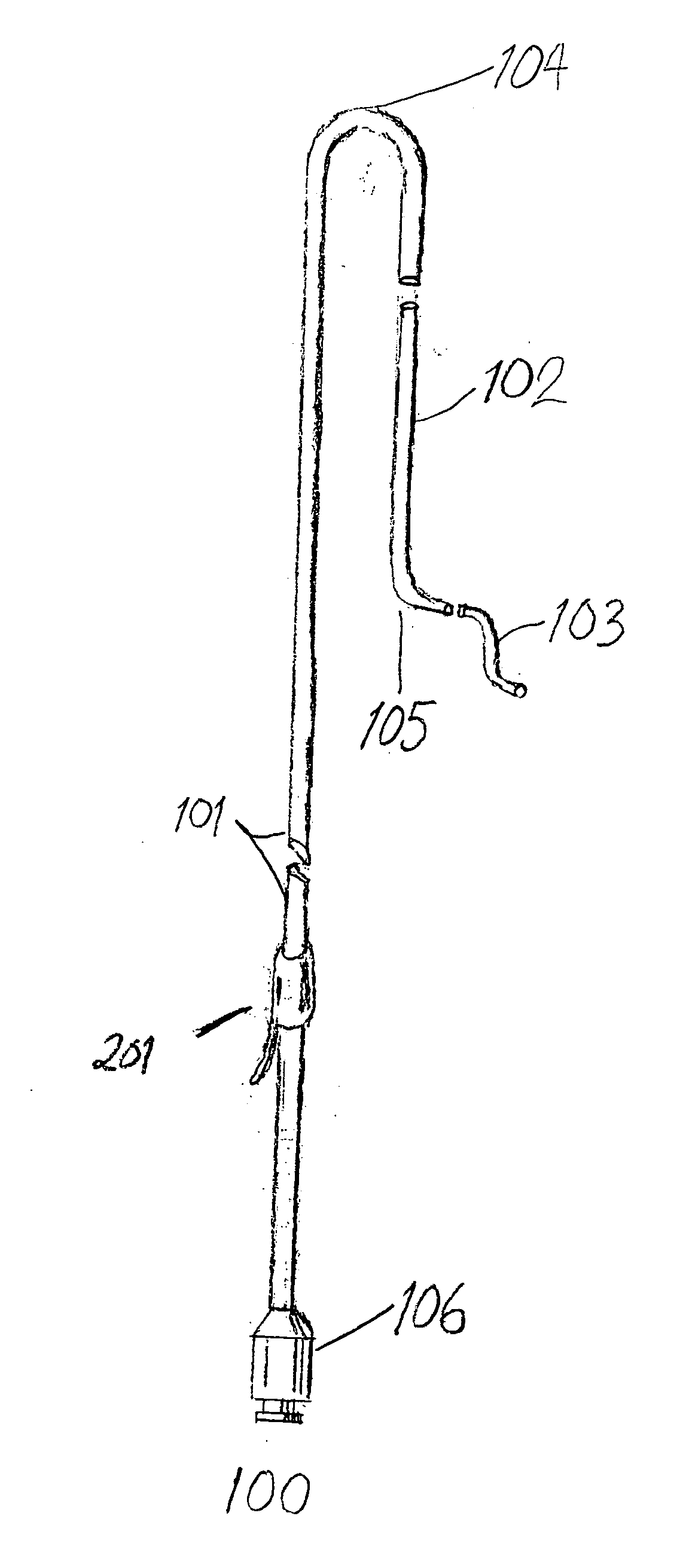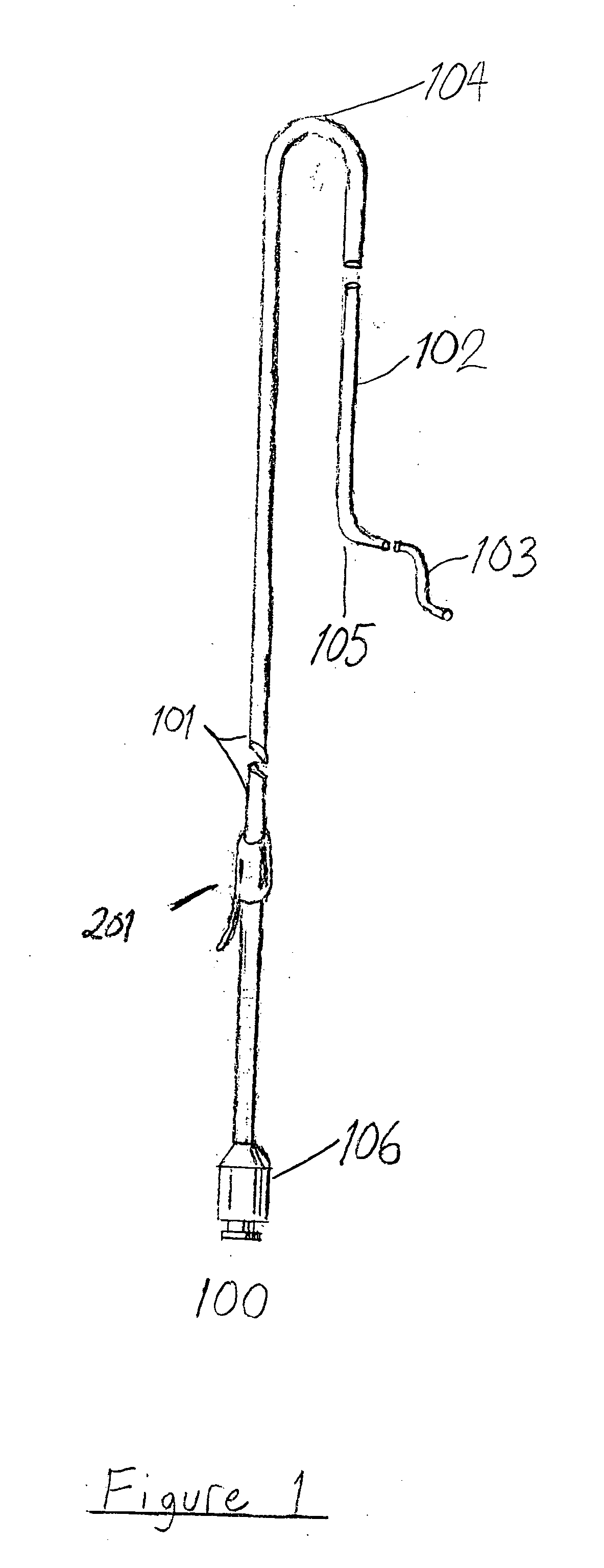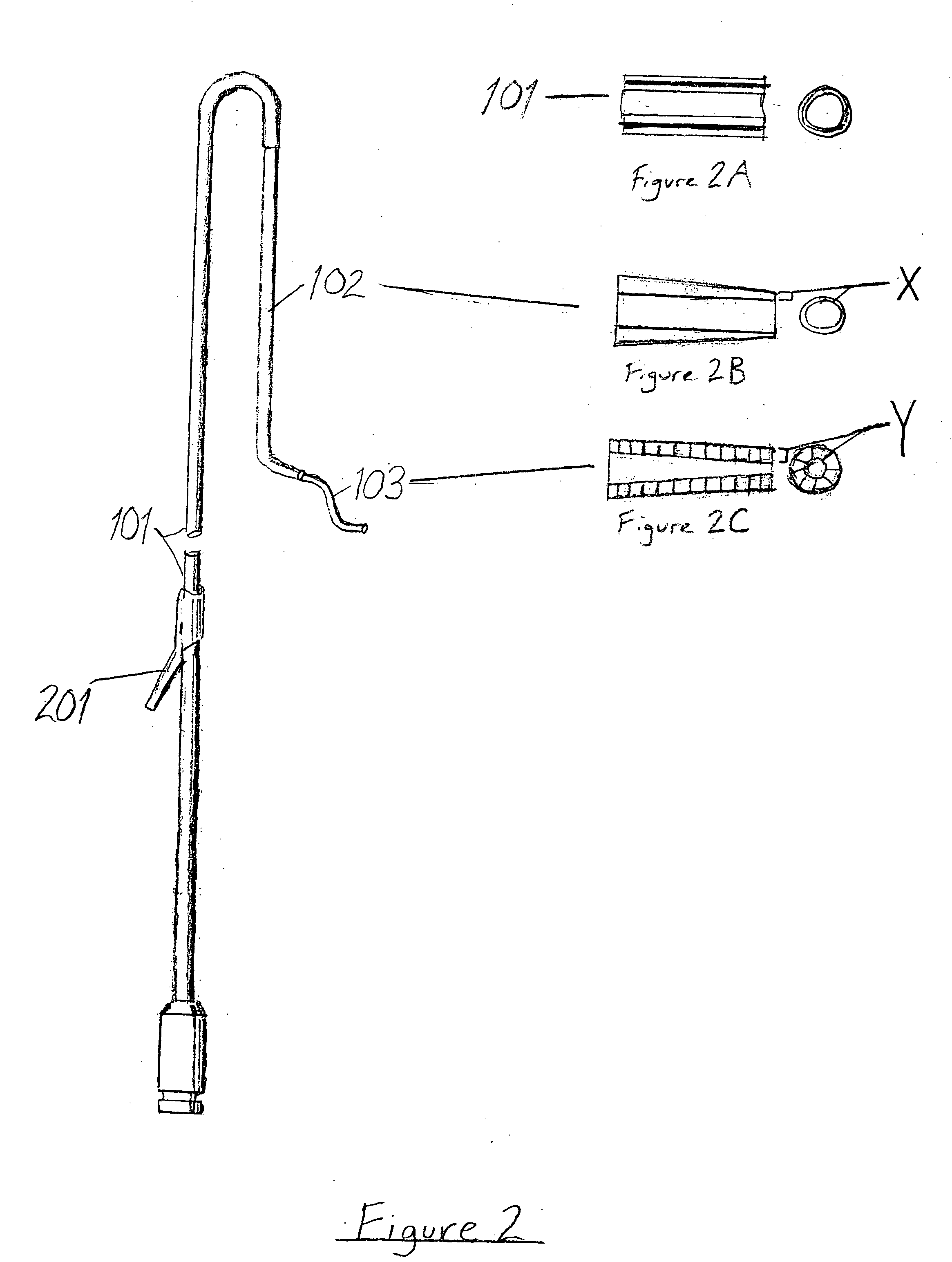Pelvic arterial catheter
a catheter and pelvic vein technology, applied in the field of pelvic vein catheters, can solve the problems of increasing the length and difficulty of the procedure, increasing the likelihood of vessel damage or non-target embolization, and reducing the overall risk of the patient, so as to minimize longitudinal trauma to the vessels, facilitate catheterization, and add to the effect of torquability
- Summary
- Abstract
- Description
- Claims
- Application Information
AI Technical Summary
Benefits of technology
Problems solved by technology
Method used
Image
Examples
Embodiment Construction
[0022] Referring to FIG. 1, an improved pelvic angiographic catheter 100 which will be between 76 and 87 cm in length. The majority of the length of the catheter consists of the 1.66 mm outer diameter component 101 which will be between 61 and 64 cm in length. 101 is made of a firm plastic material such as polyethylene which is braided with metal for torquability and to resist kinking. The primary curve of the catheter 104 falls within the 101 component between 2.0 and 3.0 cm proximal to the end of this component. The radius of 104 is between 1.0-1.2 cm in diameter and allows conformational changes between 180-420 degrees.
[0023] The next segment is the 1.33 mm outer diameter component 102 which is between 12 cm and 14 cm in length. This component is soft and hydrophilic to minimize longitudinal vectors of force when catheterizing the pelvic visceral arteries. The secondary curve 105 falls within the 102 component and starts between 11.5 cm and 13.5 cm beyond the origin of this segm...
PUM
 Login to View More
Login to View More Abstract
Description
Claims
Application Information
 Login to View More
Login to View More - R&D
- Intellectual Property
- Life Sciences
- Materials
- Tech Scout
- Unparalleled Data Quality
- Higher Quality Content
- 60% Fewer Hallucinations
Browse by: Latest US Patents, China's latest patents, Technical Efficacy Thesaurus, Application Domain, Technology Topic, Popular Technical Reports.
© 2025 PatSnap. All rights reserved.Legal|Privacy policy|Modern Slavery Act Transparency Statement|Sitemap|About US| Contact US: help@patsnap.com



